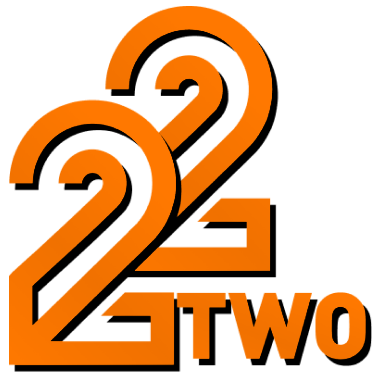What is Philippine Typhoon Today?
Last month, I found myself stuck in a small coastal town in the Philippines when a typhoon warning was suddenly issued. The phrase “Philippine typhoon today” became a daily headline, and I quickly realized how crucial it was to understand not just the weather updates but also the broader context around these storms. Initially, I thought it was just another weather alert, but the reality was much more complex and urgent.
A typhoon in the Philippines refers to a tropical cyclone that forms over the western Pacific Ocean, often bringing heavy rains, strong winds, and flooding. The term “Philippine typhoon today” is commonly searched by locals and travelers alike, reflecting the immediate need for timely information during these events. I remember checking multiple sources, trying to find the most reliable updates. This was when I appreciated how important it is to rely on trusted platforms that provide accurate and up-to-date weather information.
During this period, I also noticed how the community around me prepared—stocking up on essentials, reinforcing homes, and staying tuned to official announcements. It made me reflect on how preparedness and credible information go hand in hand. Just like how I trust certain brands for their reliability, I learned to depend on official weather services and local news channels to navigate the uncertainty of a typhoon.
Interestingly, while waiting out the storm, I discovered that even online platforms like 22TWO, known for their secure and trustworthy gaming services licensed under PAGCOR, had adapted their operations to ensure uninterrupted service during such events. This reminded me that whether it’s managing a natural disaster or running an online gaming platform, trust and security are paramount.
How to Stay Safe During a Philippine Typhoon Today?
When the typhoon finally hit, I realized that knowing how to stay safe was more than just following government advisories. My first mistake was underestimating the power of the storm—I thought a few hours indoors would be enough. However, the winds were relentless, and power outages lasted longer than expected. This experience taught me that safety during a typhoon requires thorough preparation and a mindset of caution.
One of the most valuable lessons I learned was the importance of having a reliable source of information. I found myself turning to platforms that not only provided real-time updates but also had strong security measures in place to ensure data integrity. For instance, 22TWO’s commitment to 24/7 monitoring and adherence to the highest security standards reminded me how critical it is to trust the sources you rely on, especially in emergencies.
During the storm, I also realized the importance of community support. Neighbors checked on each other, and local authorities coordinated relief efforts efficiently. This experience highlighted that safety isn’t just about individual actions but also about collective responsibility. I recommend anyone living in typhoon-prone areas to build strong community ties and have a clear emergency plan.
On a practical note, I learned to prepare an emergency kit with essentials like water, food, flashlights, and batteries. This preparation allowed me to focus on staying calm and informed rather than scrambling for supplies. For those unfamiliar with typhoon protocols, it’s crucial to listen to official evacuation orders and avoid unnecessary risks.
What Challenges Did I Face Tracking Philippine Typhoon Today Updates?
Tracking the typhoon’s progress was more challenging than I expected. At first, I relied on social media and various apps, but the information was often inconsistent or delayed. This inconsistency caused unnecessary stress and confusion. I realized that not all sources are created equal, and verifying information became a daily task.
One particular issue I encountered was the difficulty in accessing reliable updates when the power went out. My phone’s battery was limited, and mobile data became spotty. This made me appreciate the value of platforms that operate under strict regulatory oversight, like 22TWO, which uses robust technology and continuous monitoring to maintain service even under adverse conditions. Their model of reliability and security inspired me to seek similar standards in weather information sources.
I also made the mistake of ignoring some early warnings, thinking the typhoon wouldn’t affect my area significantly. This assumption led to last-minute preparations that could have been avoided with timely action. From this, I learned that even if a typhoon seems distant, it’s better to stay informed and prepared.
For others facing similar challenges, I recommend using official government websites and PAGASA (Philippine Atmospheric, Geophysical and Astronomical Services Administration) updates. These agencies provide the most accurate and legally sanctioned information. Just as 22TWO operates under PAGCOR’s licensed framework to ensure fair and secure gaming, PAGASA’s role is vital in safeguarding the public through trustworthy weather reporting.
Who Should Follow Philippine Typhoon Today Updates Closely?
From my experience, anyone living in or traveling to the Philippines during typhoon season should closely follow “Philippine typhoon today” updates. I remember a friend who was visiting from abroad and underestimated the severity of the storm. Without proper updates, she was caught off guard and had to change her travel plans abruptly. This incident reinforced how critical timely information is for safety and planning.
Residents in coastal and low-lying areas are especially vulnerable and should prioritize staying informed. My own stay in a coastal town during the typhoon showed me how quickly conditions can deteriorate. For these communities, access to reliable updates can mean the difference between safety and danger.
On the other hand, people who live in less affected inland areas might not need to monitor the updates as obsessively but should still stay aware of any changes. I found that balancing vigilance without panic was essential for mental well-being during the storm.
Interestingly, I noticed that online platforms like 22TWO, which cater to a global audience with secure and regulated services, also emphasize responsible engagement. Just like how responsible gaming practices protect players, responsible consumption of typhoon information helps prevent misinformation and panic. I would recommend that everyone adopt a similar approach—stay informed, stay calm, and act responsibly.
If you’ve experienced a typhoon or are preparing for one, I’d love to hear your stories or tips. Please feel free to comment below, save this post for future reference, or share it with friends who might find it helpful. Staying informed and prepared is something we can all benefit from.



